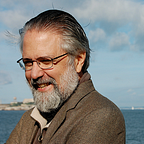Capone & The Sicilians
Al Capone was the American-born son of a couple from Agri in Campania, in Italy’s boot. Nevertheless, the press and the government so readily equated gangsters with Sicilian ancestry that Capone was often mis-identified as a native-born Sicilian or at least a deportable native son of Campania. His relationship with the Sicilians was complicated. To him, Sicilians were voluble, treacherous, trigger-happy xenophobes more interested in vendettas than making money, and his Organization, later known as the Chicago Outfit, was never an integral part of Cosa Nostra.
For their part, Sicilians deplored Capone’s defiance of tradition and his willingness to recruit Jews, Irishmen, and Eastern European immigrants into his ranks. Capone did what he could to control Chicago’s Sicilian community’s primary fraternal order, the Unione Siciliana. But most of the men he installed as its president were summarily gunned down by Sicilians who deeply resented Capone’s attempts to open the Unione’s ranks to immigrants from all over Italy.
Capone’s second most lethal enemy after the North Side Gang, was a former grocer named Joey Aiello, who, as kingpin in Chicago’s Little Sicily, offered a $50,000 reward to whoever assassinated Capone. He is said to have imported some dozen gunmen to Chicago. But such was Capone’s intelligence network that his boys dispatched them almost as soon as they set foot in the Windy City.
He hired a pair of Sicilian killers named Scalise and Anselmi to dispatch his enemies, but when they joined the President of the Unione in a plot to eliminate Capone, he reportedly personally beat all three of them to death a couple of weeks after the Saint Valentine’s Day massacre.
The Sicilian Capone admired most was Lucky Luciano. They had grown up together in a diverse area of Brooklyn, and unlike many of his countrymen Luciano allied himself with non-Sicilian Italians like Johnny Torrio and Capone, and Jews like Meyer Lansky. But as Luciano was building the syndicate that would evolve into the present-day Five Families, Capone was going from strength to strength, and saw little reason to submit to New York’s demands. Eventually, with Torrio’s help, Luciano turned the other bosses in the country against Capone, denouncing his old pal as a reckless killer, monopolist and publicity hound, and ordering him, on pain of death, to get himself jailed until the turmoil following the Valentines Day Massacre and his execution of his Sicilian turncoats had settled down.
But Capone would not be tamed, and after he returned from eight months’ self-imposed incarceration in Pennsylvania, he returned to Chicago and set up machine gun nests across from Aiello’s hiding place. As Aiello tried to flee by cab, Capone’s gunmen opened up. When the police came upon his corpse, they counted thirty bullet holes in his coat.
It may be that had Capone cooperated with Luciano and yielded some of his operations to the Syndicate, he might have beaten his tax rap and retired to Miami. But in the end it was in nobody else’s interest but Capone’s that he continue his rule in Chicago, and it’s possible that the Syndicate played a role in tipping off the Federal prosecutors about the jury he had fixed, in seeing to it that the witnesses against Capone could safely testify against him, and perhaps even in the demonstrable incompetence of Capone’s lawyers.
Copyright 2018 by Andrew Ward. All rights reserved.
